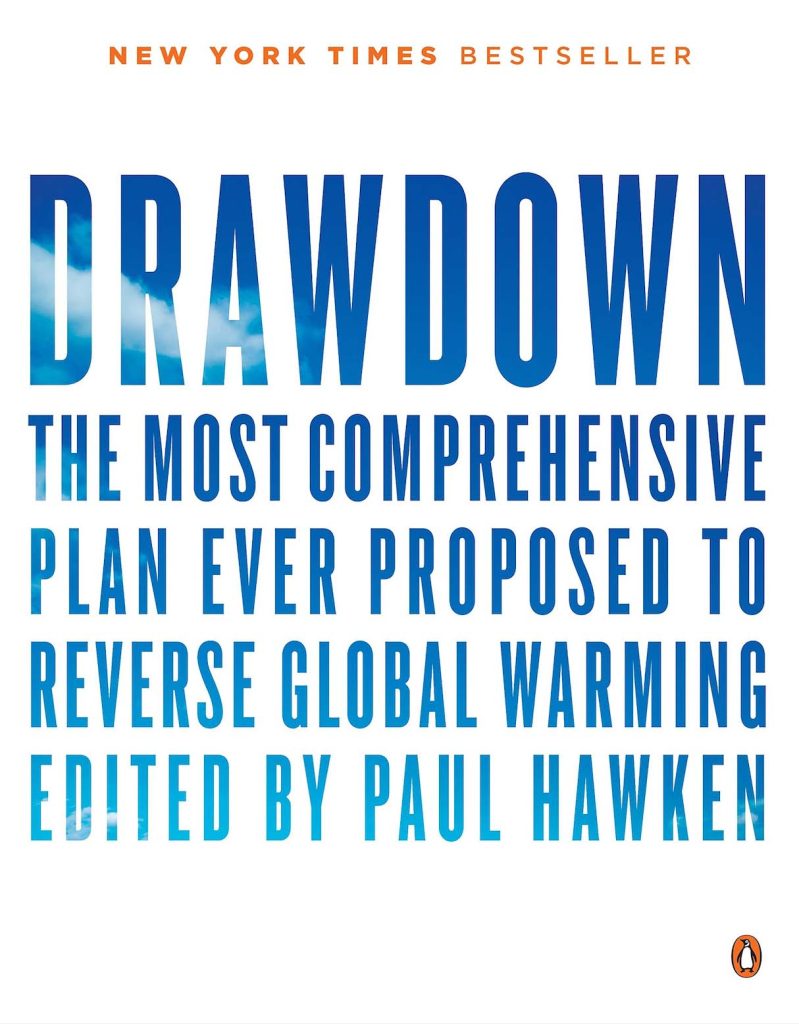edited by Paul Hawkin
As the subtitle suggests, this is “The most comprehensive plan ever proposed to reverse global warming.” The 100 scenarios analyze various strategies to reduce greenhouse gas emissions and/or to sequester carbon. The upfront costs and ultimate cost savings to change behavior is also analyzed. Each strategy is based on global data. Sixty-one research scientists across the globe who have expertise in environmental issues collaborated on the solutions. The narrative on each of the scenarios is 2-3 pages with illustrative photos in each article. All are written in layman terms.

An example of a scenario is Farmland Restoration, ranked 23rd. A study from Stanford University suggests there are approximately one billion acres of land globally which are now abandoned. Ninety-nine percent of this desertion occurred in the last century. Restorative practice (ranked 11th) such as perma-gardening which integrates water saving, soil fertility and companion planting, is an example of active restoration. Such approaches require funding and are labor intensive if done on a large scale. The overall effectiveness of Farmland Restoration is huge. It would increase carbon sequestration by 14.08 gigatons at a cost of 72.2 billion with a savings of 1.34 trillion. It would produce an additional 9.5 billion tons of food.
Nuclear energy is ranked as 20th out of 100 strategies as to effectiveness. The other strategies are listed as “no regrets” while nuclear is the only strategy labelled ”regret”. There is a decrease in carbon impact but also a risk of tritium release, abandoned uranium mines, mine tailing pollution, spent nuclear waste disposal, illicit plutonium trafficking, and the need to guard nuclear waste for thousands of years.
While our current situation is traumatic to think about, the book is hopeful. Each environmental problem is exposed but combined with solutions.

